
The Battle of the North Cape was a Second World War naval battle that occurred on 26 December 1943, as part of the Arctic campaign. The German battleship Scharnhorst, on an operation to attack Arctic convoys of war materiel from the western Allies to the Soviet Union, was brought to battle and sunk by the Royal Navy's battleship HMS Duke of York with cruisers and destroyers, including an onslaught from the destroyer HNoMS Stord of the exiled Royal Norwegian Navy, off the North Cape, Norway.
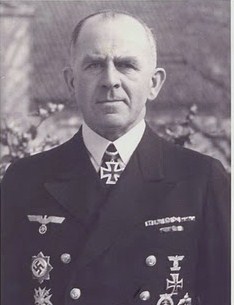
Otto Ciliax was a German naval officer who served in the navies of the German Empire, the Weimar Republic and Nazi Germany. As an admiral during World War II, he commanded the German battleships. He was a recipient of the Knight's Cross of the Iron Cross.

Friedrich Bonte was the German naval officer commanding the destroyer flotilla that transported invasion troops to Narvik during the German invasion of Norway in April 1940.

Helmuth Brinkmann was a Vizeadmiral in the Kriegsmarine during World War II who captained the heavy cruiser Prinz Eugen. Prior to World War II he commanded the aviso Grille, Adolf Hitler's state yacht. He was also a recipient of the Knight's Cross of the Iron Cross of Nazi Germany. Brinkmann surrendered to British troops in 1945 and was held until 1947.

Theodor Krancke was a naval commander and admiral of Germany during World War II and a recipient of the Knight's Cross of the Iron Cross with Oak Leaves.

Kurt Fricke was an Admiral with the Kriegsmarine (navy) of Nazi Germany during World War II and a recipient of the Knight's Cross of the Iron Cross.

Wilhelm Meisel was an Admiral of the Kriegsmarine of Nazi Germany during World War II and a recipient of the Knight's Cross of the Iron Cross.

Günter Kuhnke was a German submarine commander during World War II and later a Konteradmiral with the Bundesmarine, West Germany's navy. He was a recipient of the Knight's Cross of the Iron Cross of Nazi Germany.
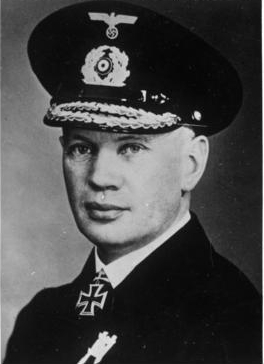
Oskar Kummetz was an admiral with the Kriegsmarine during World War II. He also served in the Kaiserliche Marine during World War I. Kummetz was awarded the Knight's Cross of the Iron Cross for his actions in the Battle of Drøbak Sound, during which his command, the Blücher, was hit in the superstructure by two 28 cm shells from Norwegian fortress Oscarsborg, 15 cm shells from Kopås fortress and 5.7 cm gunfire from Husvik fortress. From Kaholmen Blücher was hit by two torpedoes and she sank 84 metres below the sound.
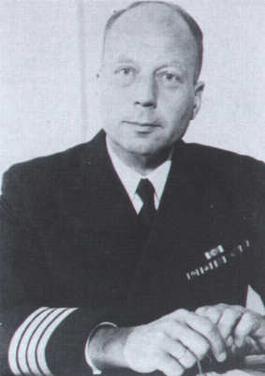
Otto Christian Ites was a German naval officer, serving first as a submarine commander with the Kriegsmarine during World War II, and later as Konteradmiral with the Bundesmarine.
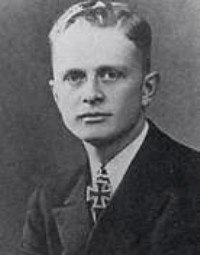
Niels Bätge was a German Schnellboot commander with Baltic German origin in World War II and recipient of the Knight's Cross of the Iron Cross. Bätge was promoted to Korvettenkapitän on 1 September 1943. Shortly after his promotion he took command of the destroyer Z35 on 25 September 1943. The destroyers Z35 and Z36 both ran into a German naval mine in the Gulf of Finland on 12 December 1944. Bätge and 24 members of the crew managed to save themselves in a life boat. However, they all froze to death and were later washed ashore near Åland.

Kurt-Caesar Hoffmann was a senior naval commander in the German Navy (Kriegsmarine) during World War II, who commanded the battleship Scharnhorst. He was a recipient of the Knight's Cross of the Iron Cross.

Hubert Schmundt was a German admiral during World War II. He was a recipient of the Knight's Cross of the Iron Cross of Nazi Germany.
Kapitän zur SeeFritz Antek Berger was a Knight's Cross of the Iron Cross recipient during World War II.
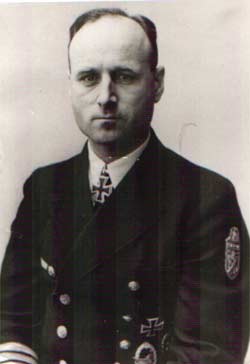
Max-Eckart Wolff was a naval commander in the Kriegsmarine of Nazi Germany during World War II. He was a recipient of the Knight's Cross of the Iron Cross.

Ernst Lucht was a German admiral during World War II. He was a recipient of the Knight's Cross of the Iron Cross of Nazi Germany.
Alfred Schulze-Hinrichs was a Kapitän zur See with the Kriegsmarine during World War II and a recipient of the Knight's Cross of the Iron Cross.

Johann Günther Lütjens was a German admiral whose military service spanned more than 30 years and two world wars. Lütjens is best known for his actions during World War II and his command of the battleship Bismarck during her foray into the Atlantic Ocean in 1941. He was killed in action during the last battle of the battleship Bismarck.
Rolf Johannesson was a German admiral during World War II. He was a recipient of the Knight's Cross of the Iron Cross of Nazi Germany. He joined the post-war Bundesmarine in 1957 and retired in 1961 as a Konteradmiral.
A type commander in the Kriegsmarine was a permanently assigned administrative officer in the organization of the Kriegsmarine which oversaw the development, deployment, and in some cases operational activities of the various classes of German naval vessels. Due to cross jurisdiction with the Navy group commanders, who tactically commanded all vessels at sea, some type commanders were little more than ceremonial officers who held a title with little authority. Others, such as Karl Dönitz who commanded the German U-boat force, exercised near total independence and held enormous authority, both operationally and administrative.
















